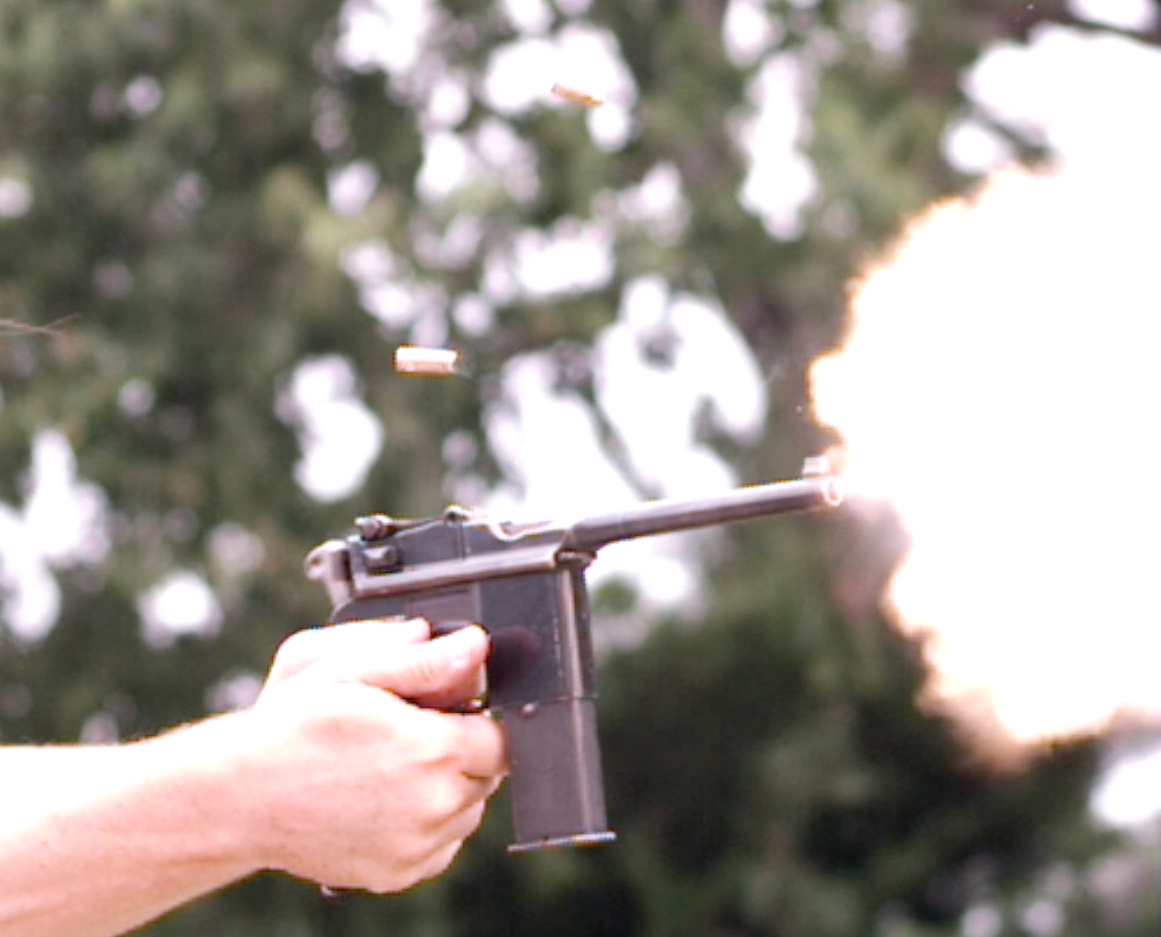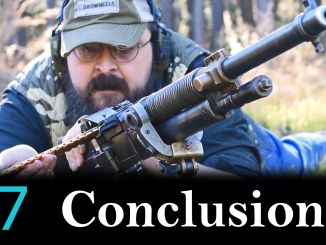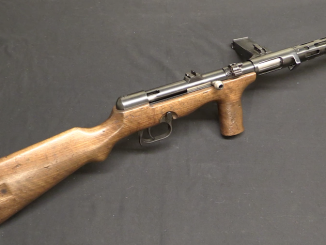Lot 408 in the September 2019 RIA auction.
Johann Nicolaus Dreyse, later promoted to the aristocracy as Nicolaus von Dreyse, designed the first mainstream military breechloading rifle. His rifle was adopted by Prussia and changed military history, but this was not his only work. Dreyse also endeavored to sell guns commercially, both rifles and handguns. This is an example of one of his first, the Model 1835. It is a single shot breechloader, with the chamber consisting of a rotating tumbler. The firing mechanism is identical in concept to that of his Model 1841 rifle, just scaled down for the smaller pistol. The piece uses a power charge of just 6 grains, but its breechloading action was quite advanced for the 1830s!




A .35 cal. bullet weighing what? about 100grs.? With a 6 grain powder charge behind it? People today complain about “mouse guns”. A .35 cal round ball pushed by 6 grains of powder would probably bounce off a mouse! I know Germans loved indoor target shooting. Maybe this load would nicely pop a hole through a paper target at 3 meters and not smoke up the room to much. I want you all to know I’ve tried very hard not to be sarcastic, but it was hard. But yes indeed this pistol was a very great leap in technology and very important if only for that.
Respectfully.
G.
The only other use would be fending off a mugger. Unsanitary conditions of the old days made any bullet wound a life-threatening injury, especially if one were shot through dirty clothes! Just kidding, but let’s don’t test the idea.
“(…).35 cal. bullet weighing what? about 100grs.? With a 6 grain powder charge behind it? People today complain about “mouse guns”. A .35 cal round ball pushed by 6 grains of powder would probably bounce off a mouse(…)”
I think one of intentions of usage of this fire-arm might be technology demonstrator or sales rep example – to allow getting experience with (back-then) “new-fangled” thingy called “breech loading” combined with self-contained cartridge (no need for separate manipulation of percussion cap). For such application “power” (and thus harsh recoil) was not needed and might be even harmful.
The OAL of a round loaded in that way could be no more than the diameter of the “breech drum”, which looks to be about 5/8″ (15-16mm).
Figuring that the bullet itself wouldn’t be much shorter than that front-to-back, you’re left with a round that closely resembles the later Volcanic ammunition, with not only the primer but most if not all of the propellant inside a hollow-skirted bullet.
In such a case, a paper cartridge is less likely than a “skin” or lacquered linen cartridge. The purpose being mainly to keep the powder from falling out of the back end of the projectile.
cheers
eon
Can Somthing be done about the closed captioning blocking the view of the subjects it is very aggravating not being able to clearly see! Thank you
Joseph Valcarce
Sure, grab the caption with your pointing device and move it. I just did this for the above video using a mouse, somewhat to my surprise.
Back on the topic, what becomes of the paper cartridge base and the internal percussion cap upon firing a Dreyse firearm? Does it all get blown out the barrel, or does the manual of arms require some post-discharge acts?
The paper was nitrated and burned along with the powder. The percussion cap was inside the base of the bullet, open end backward so its flash would ignite the powder, and the bullet left the muzzle with the cap firmly in place in its rear end.
I would expect that dealing with a misfire with this pistol would be interesting, in the sense of the old Chinese curse. There being no actual extractor and really no way to force the round out of the chamber piece, probably the only alternative would be to open the breech, invert the pistol, and shake it a few times.
With a percussion cap that might have hangfired, or was just sensitive enough that it might go off with a second shock (like hitting the ground), this operation might be a just a bit delicate.
cheers
eon
Forgive me for asking, but would the unloading of the misfired paper cartridge involve a cleaning rod if the item was stuck?
If the bullet is stuck in the barrel you have to probably remove the striker assemply and the rotating drum to be able to push out the bullet. If the cartridge failed to ignite and still sticks in the drum I guess pincers are in to to pry out the cartridge. And pray that it does not ignite late.
forgive me if I’m stating the obvious, but only if the needle had been withdrawn. Otherwise, one cleaning rod followed by a ball bouncing? (6 grain powder charge) off your hand.
G.
I think that these guns were for indoor target shooting. Then low power was an advantage.
Its not from 1835, But rather 1850:s calibre is 0.380 inch and charge is 10 grains of fffg, The .35 calibre and 6gran mark on the side, is in old preussian inch and grain messure, And is not the same as modern amerikan messure, I know this for sure, because i have tools for making ammo for it, Me and another person, actually shoot our guns for real, both pistol and rifle, Probably not very common, We live in sweden, so if you visit Sweden Ian, youre welcome to join us and try it out, Power is just below a modern 9mm luger, So not that weak a gun really, accuracy is better then any old black powder gun i ever try out
Thank you for your information regarding the old Prussian measure units. That explained a lot.